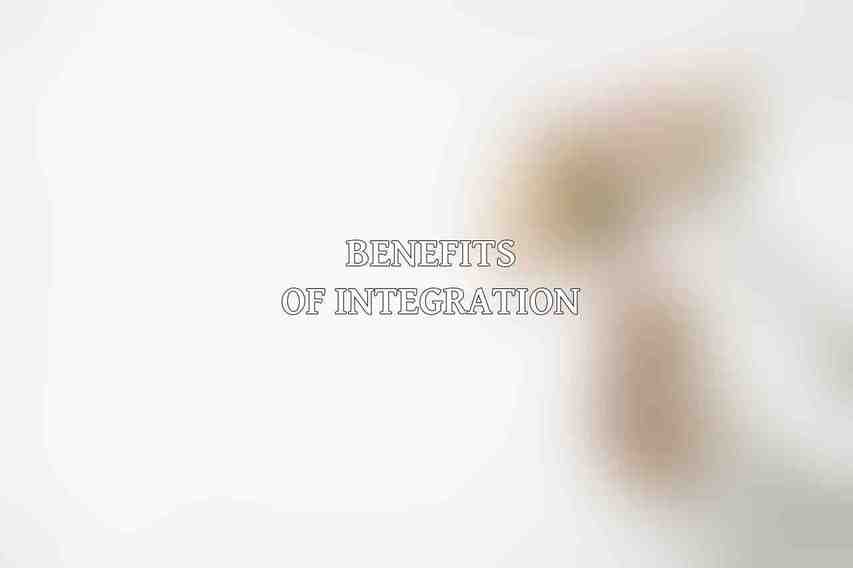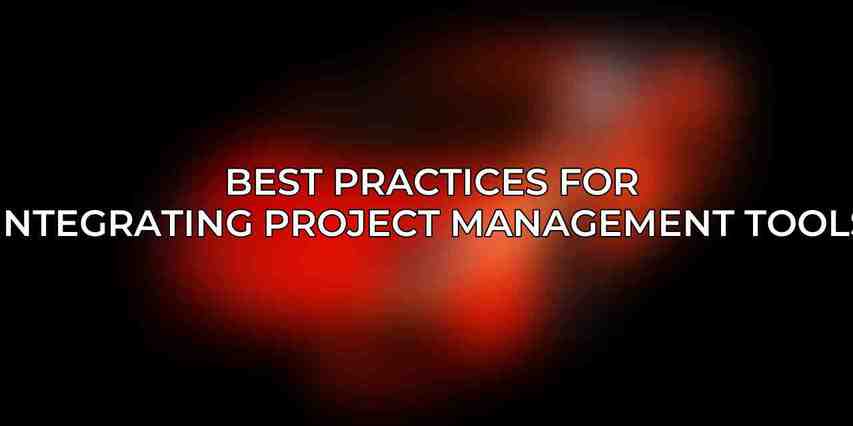The integration of project management tools with other essential software has become a cornerstone of efficiency and success. the fusion of diverse software systems provides a unified platform for project teams to collaborate, communicate, and streamline workflows seamlessly. By integrating project management tools with various software applications, organizations can enhance collaboration, optimize processes, and boost overall productivity.
Importance of integrating project management tools with other software
The integration of project management tools with other software is crucial as it facilitates a cohesive work environment where data flows effortlessly between various systems. This integration eliminates silos and enhances cross-functional collaboration by providing a centralized hub for information exchange. Additionally, integrating software tools empowers project managers and team members with real-time insights, enabling informed decision-making and improved project outcomes.
Benefits of integration:

- Enhanced Collaboration: Integration fosters seamless communication and collaboration among team members, leading to increased transparency and accountability.
- Streamlined Workflows: By connecting project management tools with other software, workflows are optimized, reducing manual data entry and minimizing errors.
- Improved Efficiency: Integration automates tasks, reduces redundancies, and accelerates processes, ultimately enhancing the overall efficiency of project execution.
Common Software Integrations for Project Management
A. Email integration:
Email integration enables users to send, receive, and track emails directly within the project management tool. This integration streamlines communication processes by centralizing email correspondence associated with specific projects. Automatic email notifications ensure timely updates and reminders for project-related tasks and milestones.
| Email Integration Features |
|---|
| Send and receive emails |
| Track email communication |
| Automated notifications |
B. Calendar integration:
Calendar integration syncs project tasks with personal or team calendars, allowing for efficient scheduling of appointments and meetings directly from the project management tool. Visualizing project deadlines and milestones in a calendar view enhances project planning and time management.
| Calendar Integration Features |
|---|
| Sync project tasks with calendars |
| Schedule appointments and meetings |
| Visualize project deadlines |
C. CRM integration:
Integrating Customer Relationship Management (CRM) systems with project management tools enables seamless management of customer interactions within the project context. It allows teams to track project progress against customer data, automate lead generation, and streamline sales processes.
| CRM Integration Features |
|---|
| Manage customer interactions |
| Track project progress |
| Automate lead generation |
D. Document management integration:
Document management integration enables users to store, access, and collaborate on project documents directly within the project management tool. Version control, secure sharing, and automated notifications streamline document workflows and ensure consistency across project documentation.
| Document Management Integration Features |
|---|
| Store and access project documents |
| Version control and collaboration |
| Automated sharing and notifications |
E. File sharing integration:
File sharing integration facilitates seamless sharing and collaboration on project files among team members. Centralized storage, real-time updates, and version control ensure that all stakeholders have access to the most recent project files, fostering collaboration and reducing the risk of working on outdated information. You can find more information on Emerging Trends in Project Management Tools for 2024 and Beyond You can find more information on The Ultimate Guide to Choosing the Right Project Management Tool for Your Team
| File Sharing Integration Features |
|---|
| Seamless file sharing |
| Centralized storage |
| Real-time updates |
Best Practices for Integrating Project Management Tools

A. Identify key integrations:
When integrating project management tools with other software, it is essential to identify key integrations that align with the project’s objectives and requirements. Understanding the specific needs of the project team and the scope of the project helps in prioritizing integrations that will deliver the most value.
| Key Integration Considerations |
|---|
| Value to the project |
| Alignment with project needs |
B. Choose the right tools:
Selecting the right software tools for integration involves researching and comparing available options to find solutions that complement the existing project management tool. Compatibility, user-friendliness, and ease of implementation are critical factors to consider when choosing software for integration.
| Selecting Software Tools for Integration |
|---|
| Compatibility with existing tools |
| User-friendliness and implementation |
C. Configure integrations effectively:
Efficient configuration of integrations is essential for seamless data flow and functionality. Setting up integrations according to the project’s specific requirements, thorough testing to ensure proper operation, and regular monitoring for errors or issues are vital steps in configuring integrations effectively.
| Effective Configuration of Integrations |
|---|
| Adapt to project requirements |
| Test thoroughly and monitor regularly |
Advanced Integration Scenarios
A. Custom API integrations:
Custom API integrations involve developing tailored connections between project management tools and specific software systems. These custom integrations automate complex workflows, data exchanges, and interactions between different applications, enhancing efficiency and data accuracy. Learn more about Mastering Workflow Efficiency: Using Project Management Tools to Their Full Potential
| Custom API Integration Benefits |
|---|
| Automate complex workflows |
| Enhance data exchange |
B. Enterprise integration platforms:
Enterprise integration platforms enable organizations to connect multiple software systems and applications into a unified ecosystem. These platforms centralize integration management, streamline data flow, and provide tools for monitoring and optimizing integrated systems.
| Enterprise Integration Platform Features |
|---|
| Connect multiple software systems |
| Centralize integration management |
C. Cloud-based integrations:
Leveraging cloud-based integration solutions simplifies the process of integrating project management tools with other software. Cloud-based integrations eliminate the need for on-premises infrastructure management, reduce maintenance costs, and ensure scalability and flexibility for growing project needs.
| Advantages of Cloud-Based Integrations |
|---|
| Eliminate infrastructure management |
| Scalability and flexibility |
the seamless integration of project management tools with essential software offers unparalleled benefits in enhancing project collaboration, optimizing workflows, and driving overall efficiency. By following best practices, exploring advanced integration scenarios, and leveraging the power of diverse software integrations, organizations can achieve improved project outcomes and streamline project execution. Embracing software integration is not just a trend but a strategic imperative for modern project management success. It is time to integrate and elevate your project management experience to new heights!
Feel free to explore more about project management tools, the importance of software integration, and advanced integration systems to propel your projects towards success.
Frequently Asked Questions
What are project management tools?
Project management tools are software applications designed to help teams organize and manage their work efficiently. They typically provide features such as task tracking, team collaboration, scheduling, and reporting.
Why is it important to integrate project management tools with essential software?
Integrating project management tools with essential software allows for a seamless workflow and better communication between team members. It helps in streamlining processes, increasing productivity, and reducing the risk of errors.
Which essential software can be integrated with project management tools?
Essential software that can be integrated with project management tools include communication tools like Slack or Microsoft Teams, document management systems like Google Drive or Dropbox, and CRM systems like Salesforce or HubSpot.
How can one seamlessly integrate project management tools with essential software?
One can seamlessly integrate project management tools with essential software by using built-in integrations, third-party integration platforms like Zapier or Integromat, or custom API development. It’s important to choose the method that best suits your specific needs.
What are the benefits of integrating project management tools with essential software?
Some benefits of integrating project management tools with essential software include improved collaboration, real-time updates, increased efficiency, reduced data duplication, better reporting and analysis, and overall enhanced project success.

